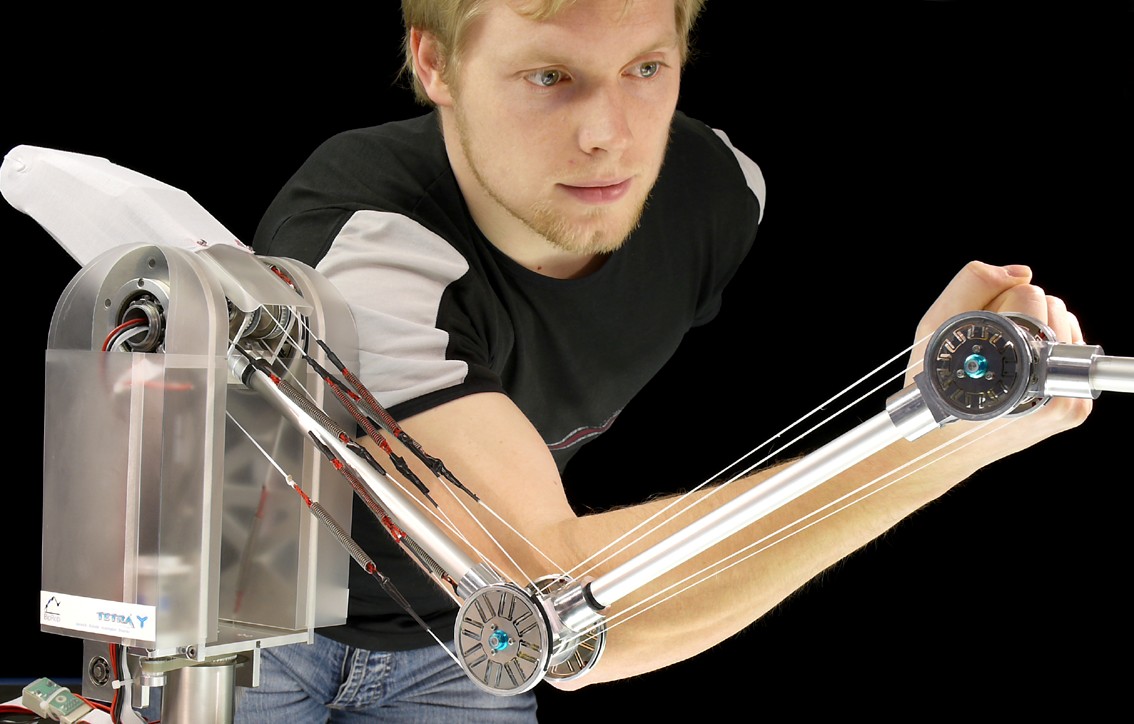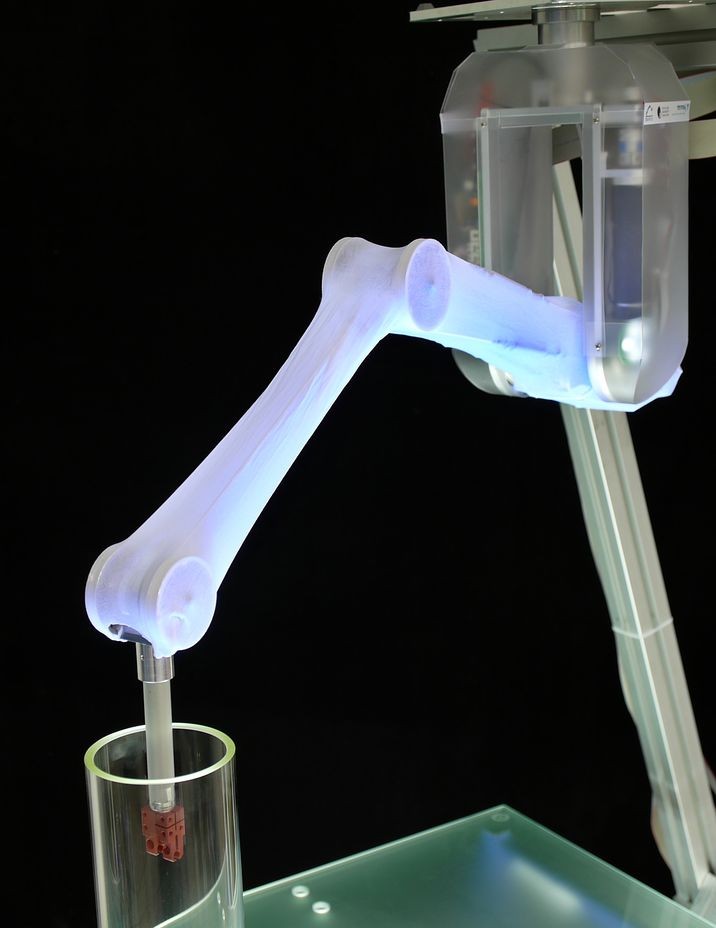Bionic Assistant Robot for Semi-Autonomous Handling and Inspection Tasks
Many small and medium enterprises (SMEs) are in need of improving their market position by increasing production and cost efficiency with automation solutions. In contrast to the large industrial enterprises, SMEs have to cope with less structured environments near to human workspaces and frequently changing conditions of the production process. These applications demand high collision safety, intuitive user interface and programming, the capability to flexibly change the surroundings and the place of operation as well as moderate installation and running costs. Common industrial robots currently available on the market are typically not flexible enough and too big or too expensive for these applications.



Exemplary applications for the biorob robot arm
[Source: TETRA Gesellschaft für Sensorik, Robotik und Automation mbH]
Compliance and elasticity are essential characteristics of biological arms, which, despite their lightweight structure, can transport more than their own weight fast and precisely. Since decades however, mechanical elasticity is being eliminated in the design of conventional robot systems as far as possible, because it considerably impedes precise position control. As a result, these systems exhibit a poor payload to dead weight ratio and can only be operated in the direct environment of humans under high restrictions such as small operating workspace, slow movements or expensive collision avoidance systems with a sensor based virtual safety fence.
The project BioRobAssist aims at extending the BioRob arm with semi-autonomous vision, grasping, and mobility functionality to develop a novel, mobile service robot system, which is flexibly deployable and reconfigurable by semi-autonomous and human-robot-interaction capabilities and therefore suitable for efficient operation under frequently changing production conditions in SMEs as a survey, inspection, and handling assistant. The essential component of the project is the novel, lightweight and compliant, biologically inspired BioRob robot arm, with focus on its consistent further development and extension with semi-autonomous vision, grasping and mobility functionality as well as basic approaches for an intuitive user interface.
Bionic approach
The BioRob arm is a new type of robot arms based on an antagonistic, series elastic actuation concept inspired by the elastic muscle-tendon apparatus, invented and patented in 1997 by Prof. Dr. B. Möhl (Saarbrücken). It marks a paradigm shift in robotics from stiff to elastic systems and boasts an excellent payload to dead weight ratio with a reaching range, high inherent safety in case of collisions and an energy-saving control, all of which comparable to a human arm.
Environmental relief effect and sustainability
First explorations indicate a ten times less power consumption compared to conventional robot systems with the same range.
Application potential and profitability
Exemplarily, two innovative and complementary application scenarios on SMEs are explored in this project, for which no satisfying automatization solution exists: handling of high-quality small batch products under flexible production situations and inspection assistance for remote monitoring and guidance of production processes.
The project creates foundations for new products and services for the automation of processes in small and medium enter-prises, which could not yet be automated or only with excessive effort and costs. In contrast to many conventional automation solutions it is also feasible to integrate untrained personnel in the automation process, being a crucial factor for its sustainable success and acceptance. Concurrently, the increased potential for higher productivity and quality strengthens the company market position.


